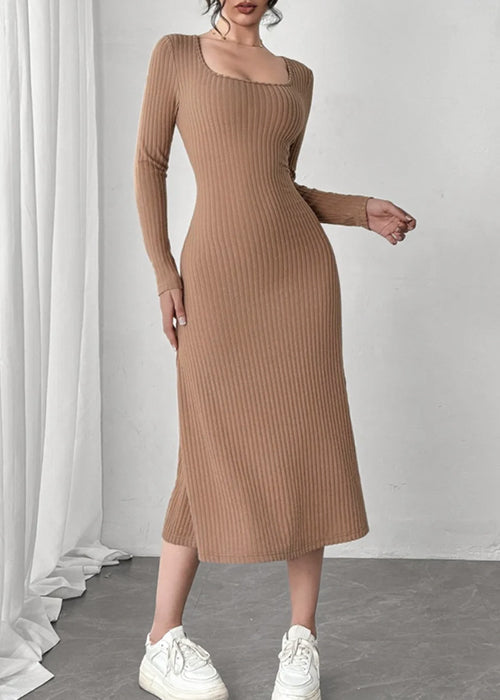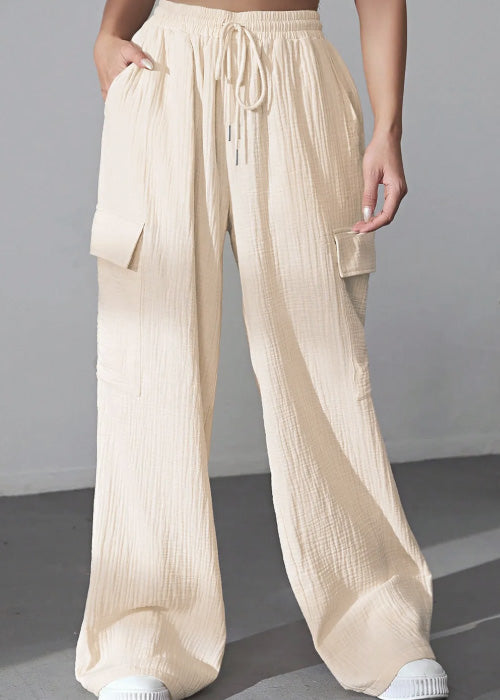Polyester is one of the most widely used fabrics in the world, beloved for its durability, affordability, and versatility. From activewear to elegant dresses, polyester has proven itself as a staple in the fashion industry. In this article, we’ll delve into the history, production, properties, and uses of polyester, while also addressing its advantages, disadvantages, care instructions, and sustainability. By the end, you’ll understand why polyester remains a key player in modern women’s fashion.
The Origins of Polyester
Polyester was first developed in the 1940s by British chemists John Rex Whinfield and James Tennant Dickson, who were inspired by the growing demand for synthetic fabrics. It was introduced commercially in the 1950s and gained popularity due to its affordability and low-maintenance nature. By the 1970s, polyester had become synonymous with trendy fashion, particularly in the form of wrinkle-free garments.
Today, polyester is a cornerstone of the textile industry, used in a wide range of applications beyond clothing, including home furnishings, industrial products, and more. Its synthetic nature and adaptability have made it one of the most widely produced fabrics globally.
How Polyester is Made
Polyester is a synthetic fiber created from petroleum-based products. The production process involves:
- Polymerization: The chemical reaction of petroleum, coal, air, and water produces polyethylene terephthalate (PET), the most common form of polyester.
- Extrusion: The PET is melted and extruded into fine fibers.
- Spinning and Weaving: These fibers are spun into threads or yarns, which are then woven or knitted into fabric.
- Finishing: The fabric is dyed and treated to achieve desired properties, such as water resistance or stretch.
This controlled manufacturing process allows polyester to be engineered for specific needs, from stretchable athletic wear to structured outerwear.
Polyester in Women’s Fashion
Polyester is a versatile fabric used to create a wide array of women’s clothing. Its ability to mimic other textiles like silk, wool, or cotton makes it ideal for designing everything from flowy dresses to form-fitting activewear. It’s often blended with other fibers, such as cotton or spandex, to enhance durability, comfort, or elasticity.
In our store, polyester plays a key role in our women’s fashion collection. Whether it’s a stylish blouse that resists wrinkles or a chic dress that holds its shape all day, polyester ensures that women stay comfortable and confident in their clothing.
Properties of Polyester Fabric
Polyester’s widespread popularity stems from its unique set of properties:
- Durability: Polyester is resistant to stretching, shrinking, and tearing, making it one of the most durable fabrics available.
- Wrinkle Resistance: Its wrinkle-free nature ensures garments look polished with minimal effort.
- Moisture-Wicking: Modern polyester fabrics are often designed to wick away moisture, making them ideal for activewear.
- Lightweight: Polyester is lightweight and comfortable to wear, even for extended periods.
- Color Retention: Polyester holds dye well, ensuring vibrant colors that last.
- Quick Drying: Its low moisture absorption makes polyester garments quick to dry, perfect for travel and outdoor activities.
Caring for Polyester Fabric
Polyester is low maintenance, but proper care can extend its lifespan and keep it looking new.
- Washing: Machine wash polyester garments in cold or warm water on a gentle cycle. Avoid using high heat to prevent damage.
- Drying: Polyester dries quickly; air-drying is best, but tumble drying on low heat is safe.
- Ironing: Use a low-temperature setting if ironing is needed, or opt for a steamer to remove wrinkles.
- Stain Removal: Polyester resists stains, but oil-based stains may require a pre-treatment with a mild detergent.
By following these simple steps, you can keep your polyester garments looking fresh and vibrant for years to come.
Advantages and Disadvantages of Polyester
Advantages:
Polyester offers unmatched durability, making it a cost-effective choice for clothing that lasts. Its wrinkle resistance and quick-drying properties make it ideal for busy lifestyles. Polyester’s versatility also allows it to mimic the look and feel of natural fabrics like silk or cotton while offering enhanced performance.
Disadvantages:
One major drawback of polyester is its low breathability, which can make it uncomfortable in hot climates. The synthetic nature of polyester means it isn’t biodegradable, raising environmental concerns. Additionally, polyester can sometimes feel less luxurious compared to natural fibers, though advancements in textile technology have improved its texture.
Why Polyester Deserves a Place in Your Wardrobe
Polyester’s adaptability makes it a go-to fabric for modern women’s fashion. It balances functionality and style, offering garments that are not only durable but also chic. From lightweight blouses to performance-focused activewear, polyester’s diverse applications ensure that every woman can find a polyester piece that suits her lifestyle.
Our store features a curated selection of polyester garments that are stylish, practical, and designed with modern women in mind. Explore our collection and find the perfect pieces to elevate your wardrobe.
Interesting Facts About Polyester Fabric
- Polyester is the world’s most commonly used fabric, accounting for over 50% of global textile production.
- Recycled polyester, known as rPET, is made from recycled plastic bottles and is gaining popularity for its eco-friendliness.
- NASA uses polyester in space suits and equipment due to its durability and lightweight nature.
- Polyester was once marketed as the “miracle fabric” in the 1970s for its wrinkle-free properties.
- Advances in polyester production have led to high-performance fabrics used in sports and outdoor gear.
- Modern polyester fabrics are softer and more breathable, addressing earlier criticisms of being uncomfortable.
- Polyester can be blended with natural fibers to create hybrid fabrics with enhanced properties.
Sustainability and Polyester
The environmental impact of polyester has been a topic of concern, as it is derived from petroleum and is not biodegradable. However, the rise of recycled polyester (rPET) offers a more sustainable alternative. By repurposing plastic waste, recycled polyester reduces the environmental footprint and helps combat pollution. Choosing garments made from rPET is an excellent way to enjoy the benefits of polyester while supporting sustainability.
Polyester fabric is a game-changer in the fashion world, combining durability, style, and affordability. Its versatility makes it a staple in women’s wardrobes, offering options for every occasion. With advancements in technology, polyester has become more sustainable and comfortable, further solidifying its place in modern fashion.
Discover the beauty and practicality of polyester in our women’s clothing collection. Shop now and experience the perfect blend of style and function.






